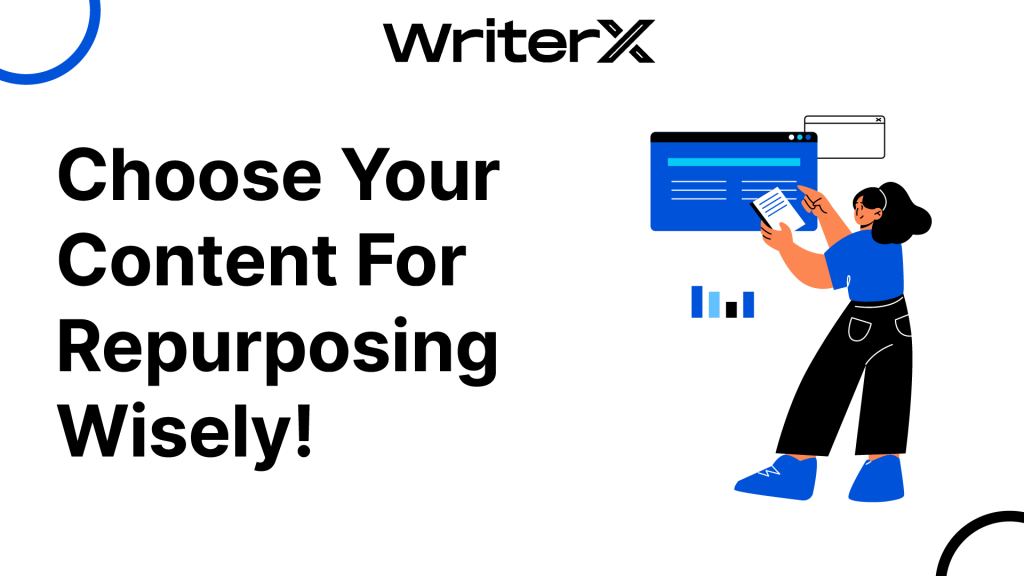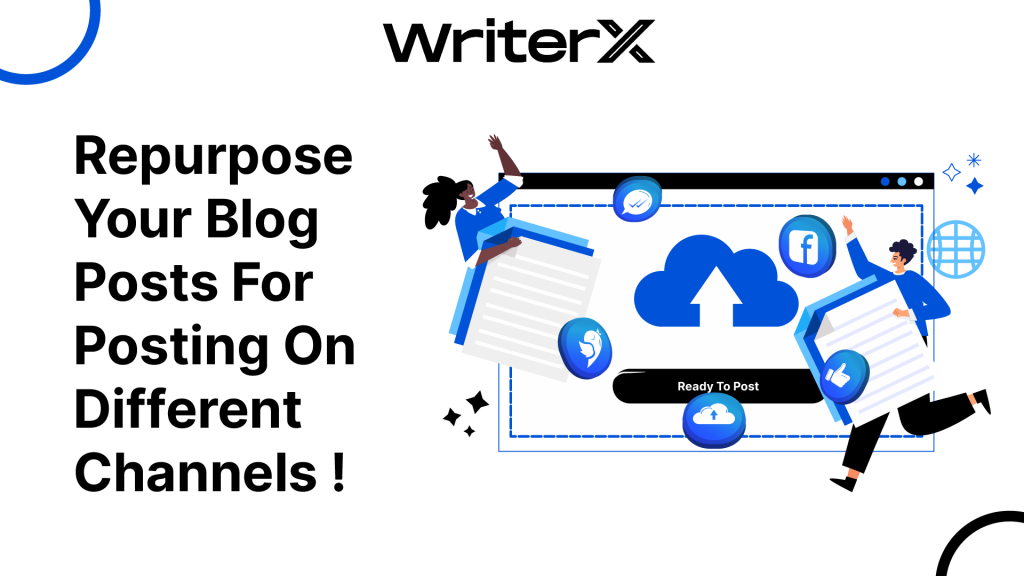
Repurposing content refers to taking general, high-quality content and turning it into something new and valuable for your audience. This can be done through a variety of means, such as reformatting the content to make it more reader-friendly or using it to create a new piece of content altogether. Some of the most popular types of content to repurpose include news stories, blog posts, and videos.
With the ever-growing popularity of social media, it’s no surprise that more and more businesses are turning to blogs as their primary marketing platform. However, many businesses don’t know how to properly repurpose blog posts for other channels, which can lead to low engagement and a lack of visibility. In this guide, we’ll teach you how to repurpose blog posts for social media, email marketing, and even your website. By following these simple steps, you’ll be able to increase your brand’s visibility and engagement across all channels.
Why bother repurposing your content?

Reach
There are many reasons why you should be repurposing your content for various channels. Not only can it help to save time and energy, but it can also help to reach a wider audience. By creating distinct versions of your content, you can ensure that it is delivered to the right people at the right time. Additionally, by using different formats and media types, you can increase the chances that your content will be seen and remembered.
Engagement
When you repurpose your content for various channels, you’re not just increasing the reach of your message, but also the engagement level. By targeting different audiences with specific content, you’re ensuring that each piece of content is seen and touched by as many people as possible.
Credibility
This increased engagement helps to build trust and credibility with your audience, which ultimately results in more leads and sales. Additionally, by creating unique content for each channel, you’re showing that you understand the needs and wants of each individual medium. This creates a sense of authority and trustworthiness, which can be crucial when selling to customers. Ultimately, repurposing your content is an essential tactic for marketing success.
What types of content are best suited for repurposing?

The types of content that are best suited for repurposing are those that are newsworthy, shareable, and can be easily edited. Content that is newsworthy can be used to generate leads or traffic to a website, while content that is shareable can be shared on social media or emailed to friends and family. Content that can be easily edited can be used as a starting point for creating new content or as the foundation for an article or blog post.
Repurposing content is a great way to increase the reach and engagement of your content. It can be anything from blog posts to social media posts to infographics. The best content to repurpose is the content that is most relevant to your audience and that can be easily adapted for different mediums. Try to find content that is well-written, visually appealing, and easy to understand. Content that is useful and relevant to a target audience can be repurposed for a wide range of uses. Consider the audience you are targeting, their interests, and the purpose of your repurposing effort before starting to write or post.
How to repurpose your content for different channels?

There are a number of ways to repurpose your content for different channels. For example, think about what you have that’s in high demand on social media. Maybe you have blog posts that discuss a particular topic, or video content that reviews products. You could repurpose these into social media posts or videos, which would reach a wider audience.
Additionally, think about your audience and what they’re interested in. If you have content that covers a specific topic, maybe you can produce infographics or white papers on that topic to market to potential customers.
Finally, consider how you can market your content to different audiences. For example, if you have blog posts that focus on SEO optimization, maybe you can produce an infographic on the same topic and distribute it through social media platforms like Twitter and LinkedIn. These are just a few examples – the possibilities are endless!
What are the benefits of repurposing your content?

Reusing your content across various channels can reap several benefits for you and your business. By creating well-crafted, engaging content that resonates with different audiences, you can achieve increased brand awareness, engagement and potential leads. Additionally, by tailoring your content to specific channels, you can improve its viewership and engagement rates. By repurposing your content in this way, you can ensure that your message is delivered to the right audience at the right time and maximize the impact of your investment.
1. More exposure for your brand: When you repurpose your content, you are essentially giving your brand more exposure. Not only will this help to attract new customers, but it can also help to amplify the message that you are trying to promote. By using content that has already been published, you can ensure that your message is being heard loud and clear. Additionally, repurposing content can help to reduce the amount of time and resources that you need to devote to creating new content. By taking advantage of existing content, you can focus on refining your message and growing your business.
2. More traffic to your website: By repurposing your content and sharing it on different platforms, you are increasing the chances that people will see it and click through to your website. There are many ways to increase traffic to your website. Repurposing your content and sharing it on different platforms is one way to increase the chances that people will see it and click through to your website. Replacing outdated content with newer, more up-to-date information is also a good way to draw in more visitors. Additionally, using social media to spread the word about your website can help attract new visitors.
3. Greater engagement with your audience: When you create different versions of your content, you are providing your audience with different ways to engage with your brand. You are engaging your audience in a way that is specific to their needs. This allows them to have a more personalized experience with your brand, which will lead to greater loyalty and customer satisfaction.
4. Increased social media reach: By sharing your repurposed content on social media, you are increasing the chances that it will be seen by more people. Repurposed content can be a great way to get your content seen by a wider audience. By sharing your repurposed content on social media, you are increasing the chances that it will be seen by more people. This can help you reach new potential customers or fans, and may even result in new leads or partnerships.
5. More leads and sales: Ultimately, the goal of repurposing your content is to generate more leads and sales. There are a few ways to generate more leads and sales from your content. One way is to repurpose your content for use on other platforms. For example, you can create a blog post that you can share on your website or social media platforms. This way, you are reaching a wider audience and generating more leads and sales.
Another way to generate more leads and sales is to create infographics or videos that promote your product or service. By using visual content, you can make your information more easily digestible and help people understand what you offer. Ultimately, the goal of repurposing your content is to generate more leads and sales. By using the right strategies, you can increase your chances of success.
How to get the most out of repurposing your content?

There are many ways to get the most out of repurposing your content, but it all starts with choosing the channels you should repurpose your blog posts for. You can repurpose your blog posts for social media, email newsletters, website content, and more. To get started, determine what type of content is most popular on each of the channels you want to repurpose your blog posts for. For example, blog posts that are popular on social media might be best repurposed as social media updates or blog post summaries.
Email newsletters may be better suited to feature excerpts from your blog posts or short reports based on them. Website content may be best suited for longer stories or in-depth analysis of specific topics. Once you know which type of content is popular on each channel, start brainstorming ideas for how to best repurpose your blog posts for that channel. Consider including photos, videos, and/or illustrations that complement the content in your blog post. Product links can also be helpful if you’re planning to write a sponsored post. If you’re not sure where to start, there are plenty of resources available online that can help you brainstorm ideas and find
There are a few key things to consider when choosing which channels to repurpose your blog posts for: – Your audience – The type of content you’re offering – The market you’re targeting When it comes to your audience, think about who would be the best suited to receive your content. For example, if you’re a personal finance blogger, you might want to consider repurposing your content for financial planning bloggers.
Similarly, if you have a lot of technical content, you might want to consider repurposing your content for lifestyle bloggers. Keep in mind that not all bloggers are created equal – some specialize in a certain genre or topic area, so it’s important to target the right ones. Once you know who your target audience is, it’s time to think about the type of content that would be best suited for them.
How Often Should You Repurpose Your Blog Posts?

Keep in mind that you don’t want to overdo it, as this can make your blog feel chaotic and unorganized. Try to repurpose a post every two or three weeks. This will help keep things fresh and remind your readers why they are interested in reading your blog. Blog posts can be repurposed in a variety of ways, but it’s a good idea to revisit your content at least once every two months. If you’ve built a following around your content, regularly publishing new and updated versions of your posts can keep your readers engaged. Additionally, publishing fresh content can help you attract new followers and boost your ranking in search engines. However, make sure to keep your updates relevant to your audience and avoid being too promotional or self-promotional.



